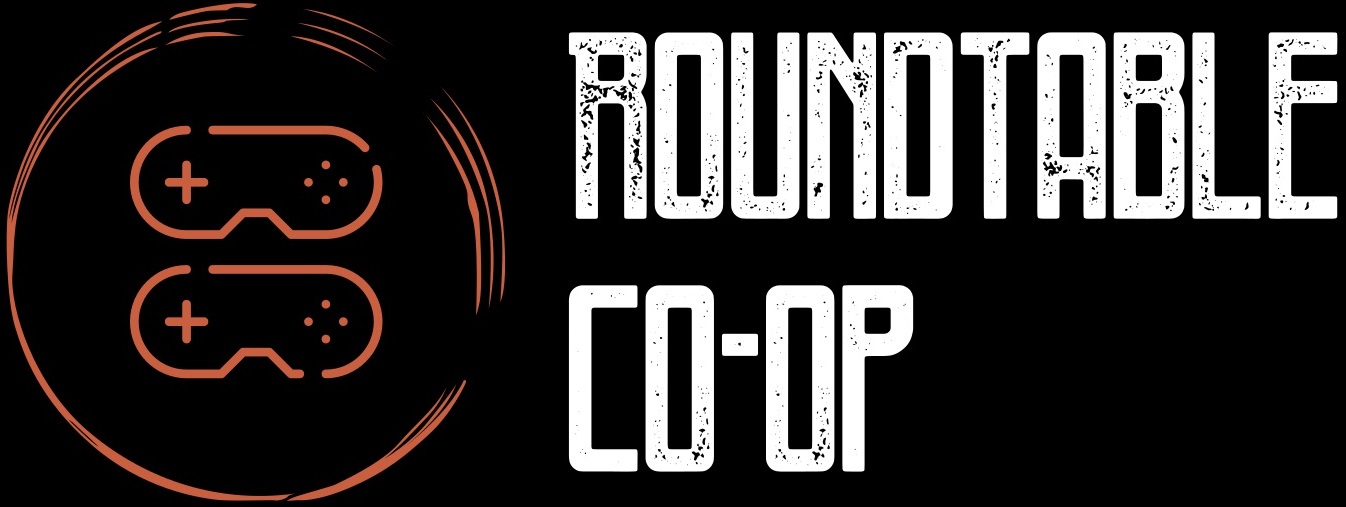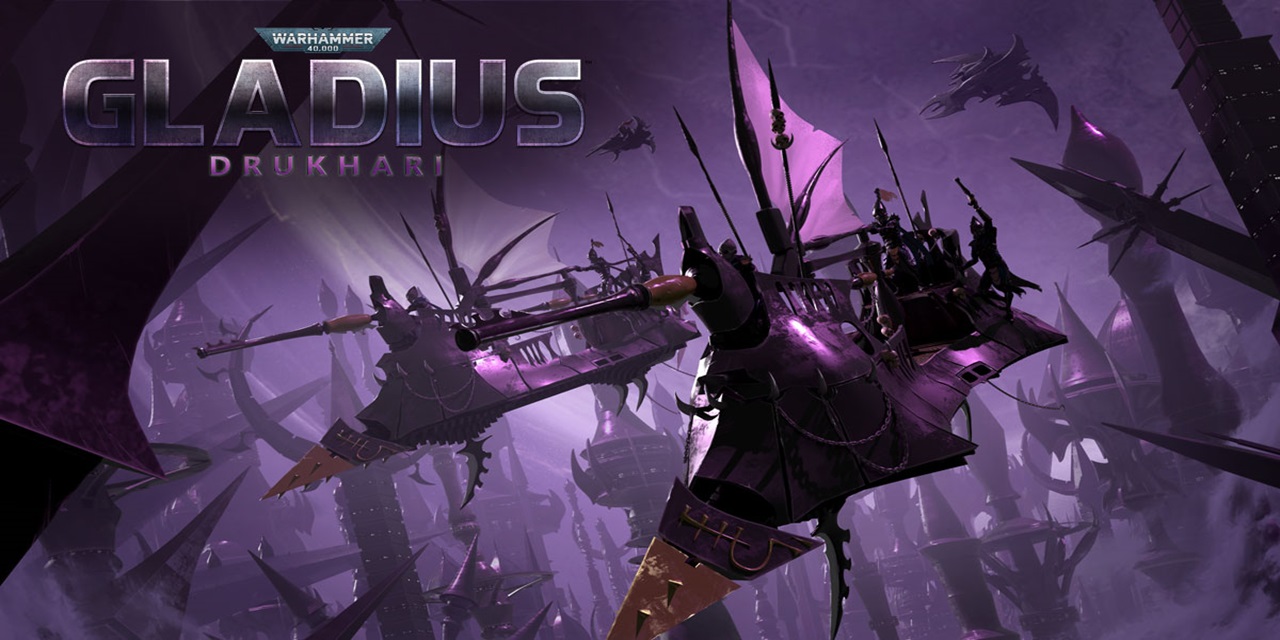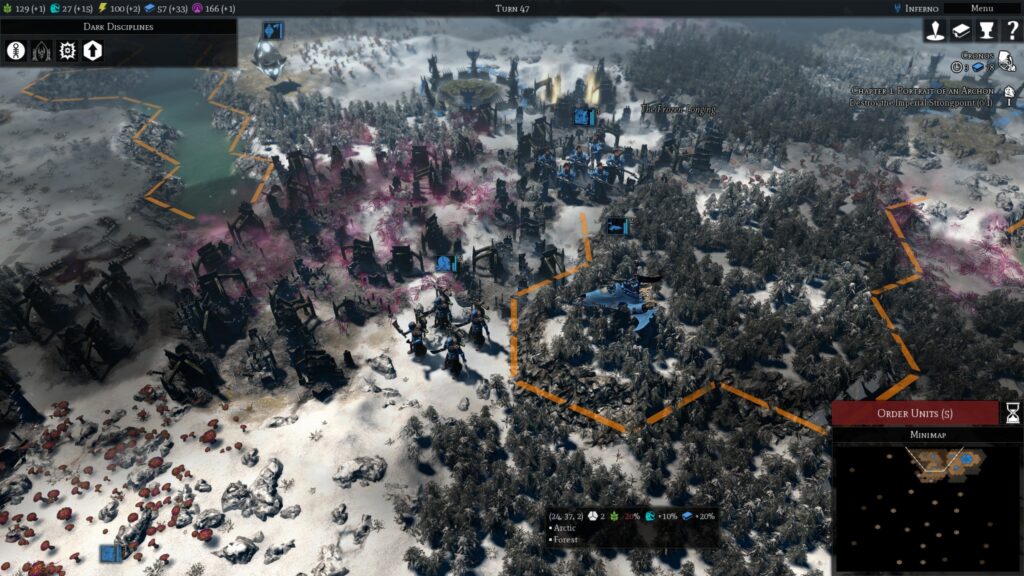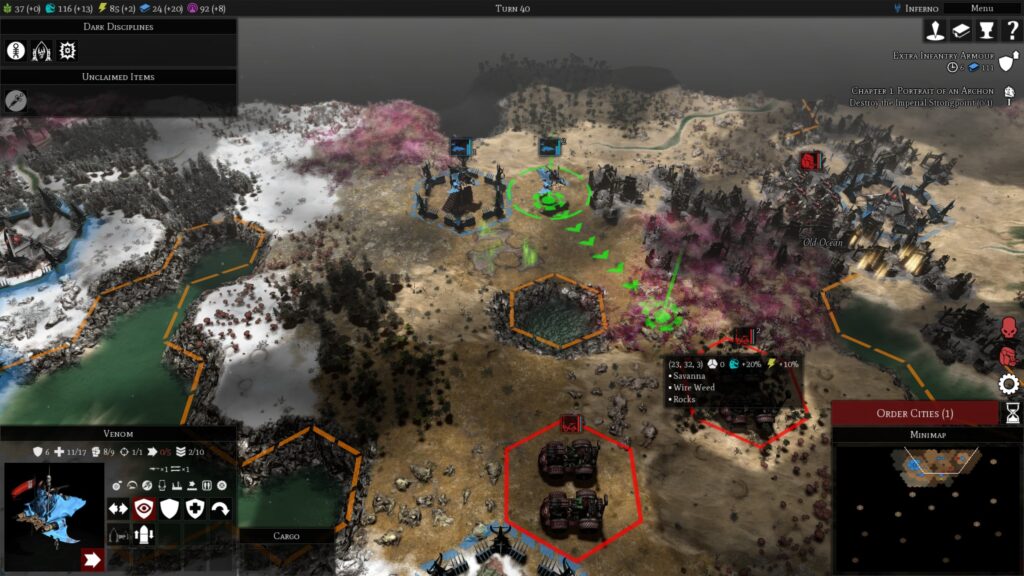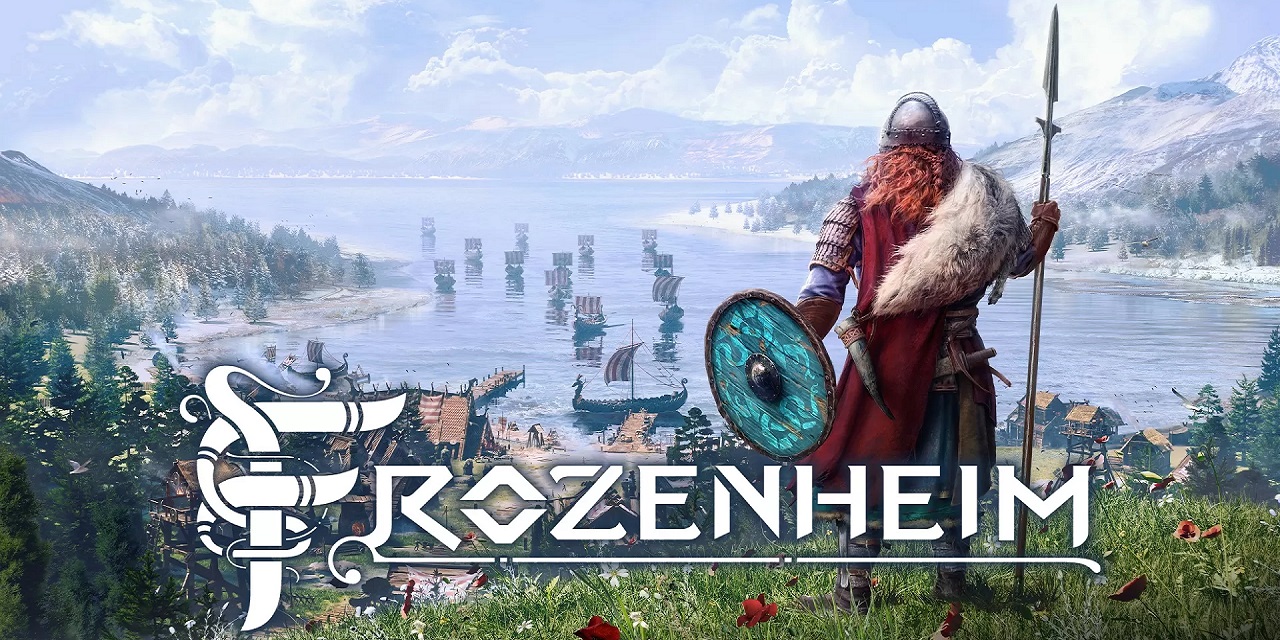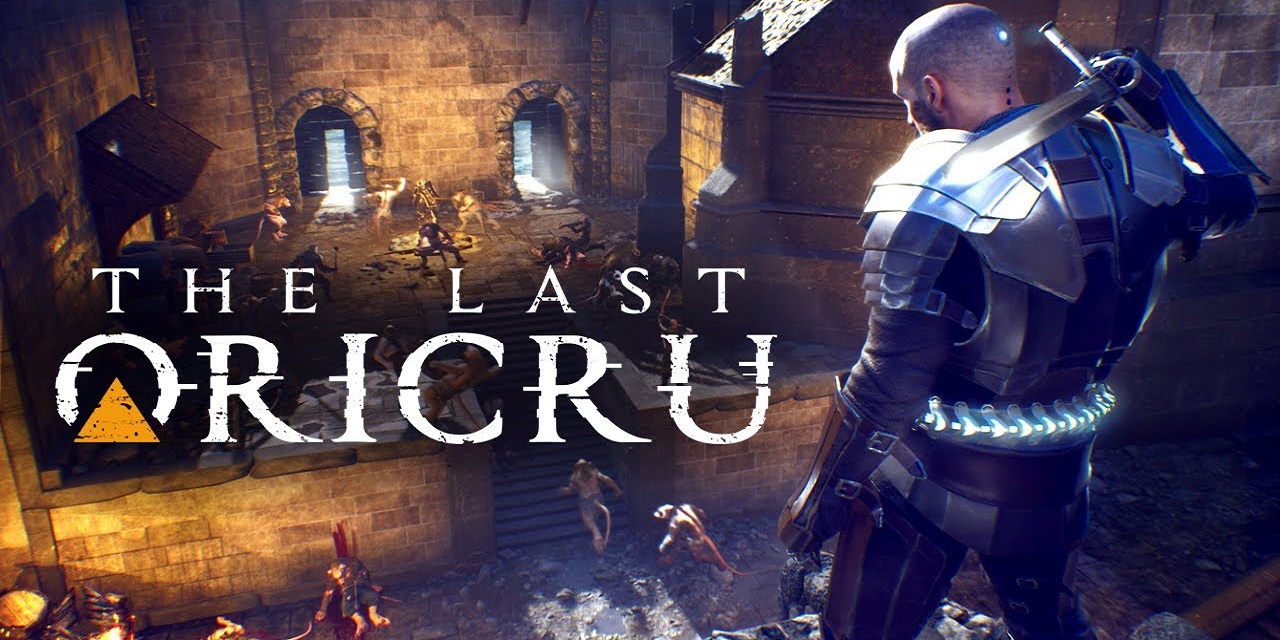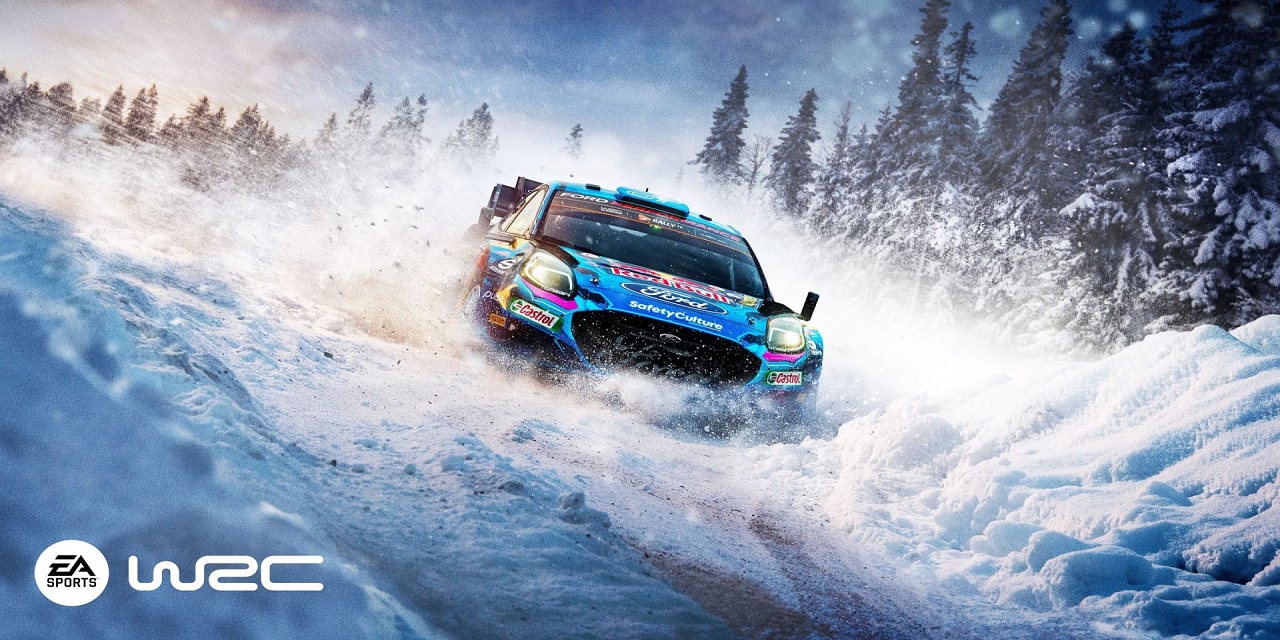Warhammer 40,000: Gladius – Relics of War is a 4x turn-based strategy game that released in 2018 and is developed by Proxy Studios and published by Slitherine. The game is set in the grim and dark world of Warhammer 40,000, and initially players chose to play as one of four factions – Space Marines, Orks, Necrons, or Astra Militarum to war for domination of the planet Gladius Prime. Over the last five years there have been an additional six factions added to the game. Now with this latest expansion, the Drukhari DLC, adds a host of new Drukhari units (Dark Eldar) and game mechanics. These were difficult to learn how to use and not as animated as previous factions, but still added good variety to the base strategy game that is a 40K take on civilisation-style gameplay.
The Warhammer 40,000: Gladius – Drukhari DLC features the Drukhari in all their malicious terror, from a roster of units to exciting new gameplay mechanics, and their initial challenge rating is hard. I would go so far as to say it should be very hard based on how many times I have been slaughtered. Destroying enemy units rewards the player with tradable influence thanks to their Soul Hunger, while Drukhari’s foul Haemonculi renders down some captives into powerful stimulants usable by its infantry. The faction’s Corsair Outposts have reduced growth rates, which can be improved by controlling more outposts, while the Raider Fortress is found on activated Webway gates, key portals from which the Drukhari can unleash their devastating raids of Gladius Prime.
I hadn’t played the base game Gladius before now despite owning it since release, so I went in blind. I have restarted a new game about five times now because the Drukhari infantry-based units I started with are such glass cannons and you can easily get overwhelmed if you charge in too quickly without prior planning. Vehicles are much sturdier and more versatile as they can transport infantry further distances to unleash on an unsuspecting enemy unit. It’s well worth keeping your units within proximity as you slowly expand out from your starting location. There is no guided campaign mode for the Drukhari, rather you need to create a new game against AI enemies, customising the map size and other settings to your desire. I chose a large map that can handle six players but played against 3 other AI factions.
Blades are omnipresent in Drukhari culture, giving units bonus armour penetration in melee. Close combat infantry units include resilient Wracks with their poisoned weapons, fast Wyches known as the dancers of death, jump-capable Scourges, and warrior-perfectionist Incubi, among others. Vehicles range from Raider versatile assault transports to Ravager gunships and Razorwing Jetfighters. For the Drukhari hero units, we have the cunning Archon, granting various offensive bonuses aimed at neutralising priority targets, as well as Cronos, an Engine of Pain, able to heal nearby troops. Another resilient support hero is the Haemonculus, wielding arrays of horrific implements to keep other Drukhari units in the fight. The only downside to the hero units is they’re as squishy as the basic melee units, so I used them more as a backup to try bolster the front lines.
Research-wise, I worked towards getting the ‘found raider fortress’ in tier 3 that grants the ability to found new cities on claimed webway gates which are scattered all over the map. You will see on enemy turns that they try to destroy these as quick as possible to reduce our ability to utilise them to our advantage. Scourges in tier 4 is my first major unit that packs a punch with anti-vehicle weapons You need to research two items in a tier to unlock the next tier of research. I started with dark foundry to produce vehicles and starscraper to produce hero units, but more to generate influence. In tier 2 I focused on cage den to increase population and haywire grenade to add some extra firepower to my basic infantry units as the quests task you with taking out a building and I burned through a lot of turns and infantry units working out that grenades are fantastic.
I can say the above research path now with confidence, but it took me four games of getting absolutely smashed and overrun to work out just how fragile the Drukhari units can be. While I died and restarted a number of times, it wasn’t a frustrating experience thankfully and I learned more with each new game. The game is easy to play and chill out while playing, and I love the verbal quips from the Orks and Space Marine’s, but that features seems to have been omitted from the Drukhari. I think it would add a lot more character and immersion if your troops could say some similar things during the playthrough. That’s really my only complaint with this new Drukhari DLC as otherwise I had a lot of fun learning and strategising with the Drukhari.
Overall, Warhammer 40,000: Gladius – Drukhari DLC is a solid addition to the base game, adding a challenging yet engaging faction that takes some getting used to, but can be quite versatile. It took me several games to get my head around a decent starting build strategy, but the gameplay is chill and exciting as you start to take control of the land. It’s a testament to the developers for continuing to keep adding decent content the game.
This review utilised a key provided by Slitherine and Warhammer 40,000: Gladius – Drukhari DLC is out now on Steam.
#roundtablecoop
